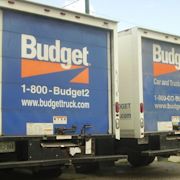Search results
Budget offers car rentals that fit your budget and your travel needs. Book online and save up to 30% on flash sales, AARP deals, one-way rentals and more.
- View / Modify / Cancel
View / Modify / Cancel - Discount car rental rates and...
- Make a Reservation
Make a Reservation - Discount car rental rates and rental...
- Get e-Receipt
Get e-Receipt - Discount car rental rates and rental car...
- Customer Care
Customer Care - Discount car rental rates and rental car...
- Sign In
Create or log in to your Budget.com account to get the best...
- Budget PreCheck
Budget PreCheck - Discount car rental rates and rental car...
- View / Modify / Cancel
Discover more placesNear Columbus, OH
- Understand the budgeting process. Figure out your after-tax income. If you get a regular paycheck, the amount you receive is probably it, but if you have automatic deductions for a 401(k), savings, and health and life insurance, add those back in to give yourself a true picture of your savings and expenditures.
- Try a simple budgeting plan. We recommend the popular 50/30/20 budget. In it, you spend roughly 50% of your after-tax dollars on necessities, no more than 30% on wants, and at least 20% on savings and debt repayment.
- Allow up to 50% of your income for needs. Your needs — about 50% of your after-tax income — should include: Groceries. Housing. Basic utilities. Transportation.
- Leave 30% of your income for wants. Separating wants from needs can be difficult. In general, though, needs are essential for you to live and work. Typical wants include dinners out, gifts, travel and entertainment.
Mar 1, 2024 · A successful budget planner helps you decide how to best spend your money while avoiding or reducing debt. Our free monthly budget worksheet can get you started.
- 8 min
- Step 1. Embrace The Ongoing Process of Budgeting
- Step 2. Calculate Your Monthly Income
- Step 3. Add Up Your Necessary Expenses
- Step 4. Add “Pay Yourself” Line Items
- Step 5. Plan For Your Discretionary Expenses
- Step 6. Compare and Adjust
- Step 7. Implement and Track Your Spending
- Budgeting Can Set You Free
- GeneratedCaptionsTabForHeroSec
We often tend to think of budgeting as a one-and-done kind of chore. You sit down with your accounts and receipts. You figure out how much you have been spending. You plan for how much you will spend in the future. Let’s look at an example, using a composite couple, “Henry” and “Janine.” The first time Janine and Henry tried to make a budget, they ...
Once you’ve embraced the realities of the budgeting process, you’re ready to start getting into the nitty-gritty numbers. You’ll start by calculating your monthly income. For anyone who receives a salary from a traditional employer, this part will be very simple. You’ll just need to take a look at your most recent pay stub to see how much you earn ...
Your necessary expenses are the bare minimum you need each month to maintain your life. These include fixed expenses and variable necessities. Most people have a basic sense of their fixed, or recurring, expenses. For instance, you know exactly how much you pay for your rent or mortgage each month. Now’s the time to look up and record every single ...
Paying yourself means funding financial goals and plans before spending your discretionary money. Many people forget to include these kinds of goals in their budgets, assuming they will meet their goals with whatever is “left over” at the end of the month. But planning on using leftover money often means your goals are left out. So the next step in...
Now that you have calculated your baseline spending and the line items for your financial goals, you’re ready to add in discretionary expenses. These are the expenditures that you want rather than need. They may include things like entertainment, dining out, clothing and the like. While some discretionary expenses may be needs (such as clothing, un...
Compare your expenses to your income. If the expense number is lower than or equal to your income number, then your budget is balanced. In that case, you are ready to implement your budget. If, however, your expenses are higher than your income, then you need to adjust your spending. You can do this by playing with any of the non-fixed expenses. An...
With a balanced budget, you’re ready to put your spending plan into action. Start spending and saving based on the budget you have created. Implementing your new budget is about more than just keeping your spending limits in mind, however. You also will need to track your spending to identify any weak spots. The best way to keep track is via whatev...
Budgeting often gets a bad rap, but it’s all about spending money on the things that matter most to you. The simple process of budgeting presents a great learning opportunity for you and your family. If, like Janine and Henry, you’re budgeting as a couple, take the time to address your individual and shared goals, including the finances that will s...
Learn how to create a budget that works for you with this step-by-step guide. Find out how to track your income and expenses, set goals, and adjust your spending habits.
- $130
- $800
- $350
- $185
Learn how to write down a plan to decide how you will spend your money each month and save for your goals or emergencies. Find out how to subtract your expenses from your income, look for ways to save money, and use your budget every month.
Learn how to create a personal budget in six simple steps, from calculating your net income to reviewing your spending regularly. Find tips, tools and examples to help you track, categorize and adjust your expenses and goals.
Apr 25, 2024 · Learn how to balance income, expenses and financial goals with a budget. Find out the benefits of budgeting, different budgeting systems and tips to get started.
People also ask
What is a budget & how does it work?
What is a budget planner?
Do you need a budget?
Why do you need a budget?
















